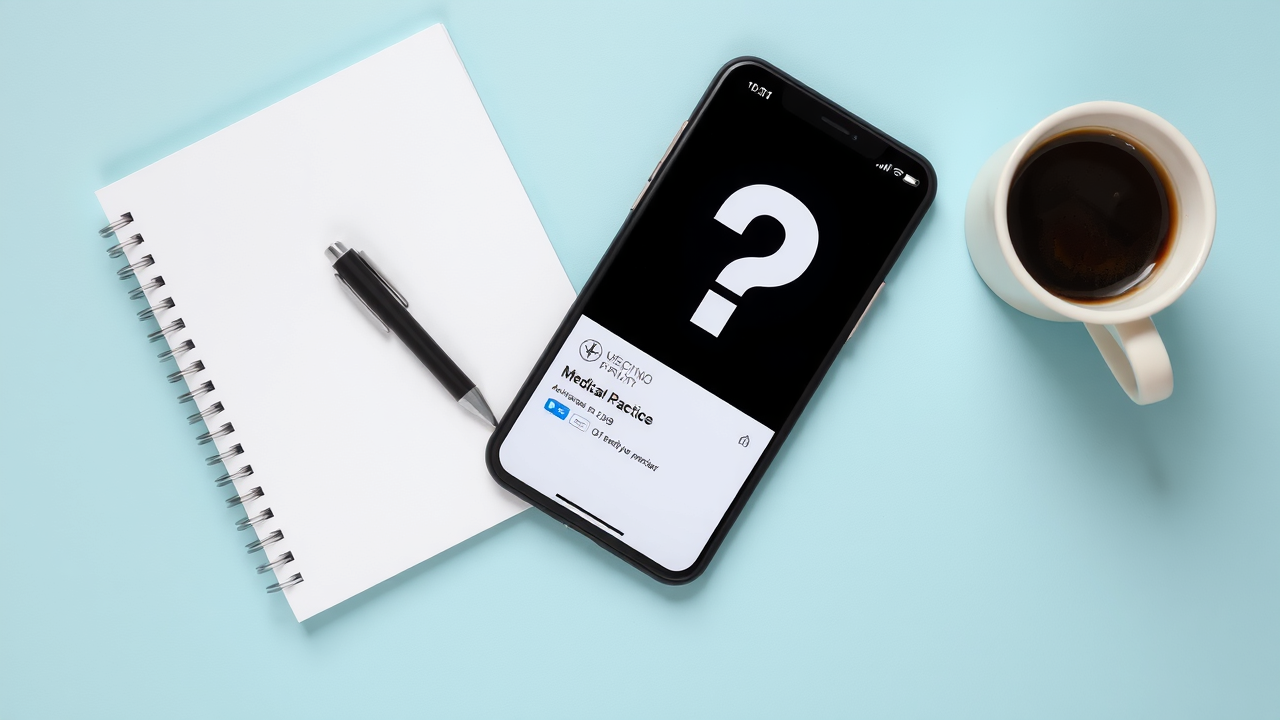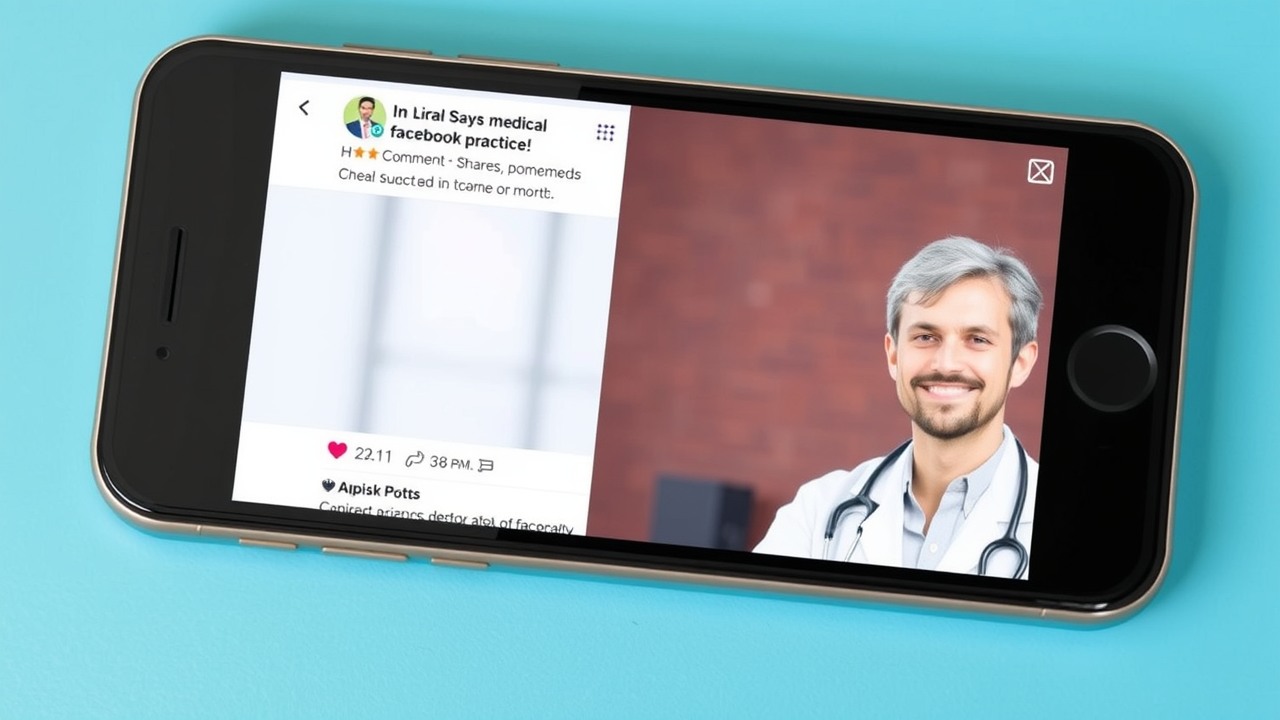
Did you know that interactive social media posts can boost engagement by up to 40% compared to traditional posts? In today’s digital world, patients crave connection and credibility from their healthcare providers, especially on social media. If your medical practice's posts feel flat or untrustworthy, you might be missing endless opportunities to educate, engage, and foster loyalty with your target audience. Get ready to unlock actionable strategies to transform your social media content into trustworthy, interactive posts that truly make a difference.
Understanding Interactive Social Media Posts: Definitions and Core Concepts
What are Interactive Social Media Posts?
Interactive social media posts are a form of media content that ask your followers to participate in real time. Instead of simply reading or watching, your audience is encouraged to comment, vote, submit stories, or complete quizzes. These interactive posts transform your practice’s profile from a billboard to a conversation hub, helping drive higher social media engagement.
In a medical setting, examples might include inviting patients to answer a quiz about nutrition myths, share their recovery stories, or weigh in on new service offerings. This style of media post makes it easy for patients to interact in meaningful, low-pressure ways, strengthening their relationship with your healthcare brand and offering a more personalized experience than conventional social media posts.
The Importance of Interactive Posts for Medical Practices
For medical practices, interactive social media posts are not just about numbers—they can transform how you educate your community, dispel myths, and build credibility. By aligning media posts with your core missions, such as patient education and empowerment, practices can leverage social media as a real-time extension of quality care. Interactive posts often boost engagement and serve important goals like patient retention and improved reputation.
With interactive posts, medical groups create a sense of belonging. When patients contribute their perspectives or see patient-generated content, they are more inclined to trust your advice and seek your services. Strong media content strategies that focus on two-way engagement help practices remain memorable and authoritative in a crowded digital landscape.
Interactive Social Media vs. Conventional Media Posts: Key Differences
What sets interactive social media apart from standard posts? While traditional media posts might inform or remind, interactive posts invite patients to act, respond, or share. The difference is in the relationship: passive reading vs. active involvement. For medical clinics, this means more qualified leads, a better understanding of your audience, and continuous feedback.
Key differences include the use of questions, challenges, and requests for feedback. Interactive social media posts can also use multimedia content, like polls or contest entries, that is far more engaging than simple text updates or stock images. These tactics drive greater media engagement and ensure that your clinic is remembered as innovative, approachable, and community-focused.

Unlocking the Power of Interactive Social Media Posts
Interactive social media posts are quickly becoming the gold standard for healthcare marketing. Recent studies show that patients are more likely to trust and interact with media posts that invite their participation, whether through quizzes, polls, or patient stories. Media engagement matters: Facebook reports that medical practices using polls and questions see their social media engagement rates increase by 2-3 times compared to those using static content. That’s a huge lift for any medical practice looking to grow brand awareness, patient trust, and local credibility.
In real time, interactive content strategies can help your social media posts stand out amid the noise. Imagine a patient scrolling through endless media posts—what makes them pause? Interactive posts not only catch their eye but also encourage them to respond, share, and become a part of your online medical community. Interactive social media posts effectively bridge the gap between patient interests and your expertise, helping you create connections that go far beyond simple appointment reminders or holiday wishes.
As you explore ways to make your posts more interactive, it’s also valuable to consider how a comprehensive social media strategy for medical practices can amplify your efforts. Integrating interactive content within a broader strategic framework ensures your engagement tactics align with your overall marketing goals and audience needs.
Why Interactive Social Media Posts Outperform Traditional Media Posts for Medical Engagement
Traditional medical practice social media posts often rely on text updates or generic images. In contrast, interactive posts—such as quizzes or feedback forms— actively involve your audience in discussions relevant to their health. This approach not only boosts engagement but also builds trust; when patients see their voices valued, they are more likely to choose your practice for their healthcare needs. Media engagement is no longer about broadcasting; it’s about relationship-building.
Interactive social media post ideas allow your practice to tap into popular trends, such as storytelling and immediate feedback, which outperform passive posts. Patients want to feel seen and heard—what better way than having them vote on health topics, share their stories, or ask questions directly? By implementing a strong content strategy with interactive elements, you’ll see an uptick not only in likes or shares but in meaningful interactions that can convert social media users into loyal patients.

The Elements of a Trustworthy Interactive Social Media Post
Building Credibility: Using Real Provider Images and Testimonials
Healthcare trust begins with authenticity. Featuring your real staff in interactive social media posts—or sharing actual patient testimonials (with permission)—makes your content relatable and believable. Patients want to know who’s behind the medical advice or the friendly smile. Real photos of your doctors, nurses, or happy patients help break down barriers and strengthen the human connection.
For example, launch a patient story campaign where real recovery stories or testimonials are highlighted as user-generated content. Add snapshots of your clinical team interacting with patients or working behind the scenes. These elements nurture confidence in both your expertise and your compassion, solidifying your practice as a trusted source on social media platforms.
Ensuring Medical Accuracy in Interactive Posts
Medical content must always be accurate and responsible. While it’s tempting to participate in trending challenges, your practice should only support interactive social media post ideas that reflect sound medicine and up-to-date research. This means that every quiz, tip, or patient story should be fact-checked and compliant with ethical standards before publication.
Your interactive content should be clear and easy to understand, meeting the needs of a sixth-grade reading level (or your preferred demographic’s literacy). This ensures your posts are inclusive, accessible, and contribute positively to your target audience’s health knowledge without risk of misinformation. Accuracy fosters trust, and can mean the difference between a one-time visitor and a loyal patient who advocates for your clinic.
Crafting Interactive Posts Aligned with Your Practice’s Expertise
Aligning your interactive social media posts with your practice’s medical specialty builds authority and consistency. For example, a pediatric group might use polls about childhood nutrition, while a physical therapy clinic could launch exercise challenges with visual instructions. Authenticity drives engagement, but so does expert relevance; your content strategy should clearly reflect your unique skills and priorities.
Each interactive post should help patients see your expertise in action, whether it’s through myth-busting quizzes, Q&A sessions, or live demonstrations. Use your platform to showcase what makes your team stand out—be it advanced training, friendly care, or remarkable patient outcomes. These tailored efforts amplify both trust and social media engagement in your local community.

How to Create Interactive Social Media Posts That Engage Your Target Audience
Identifying Your Medical Practice's Target Audience for Interactive Posts
Effective interactive social media posts begin with a deep understanding of your target audience. Is your practice focused on young families, seniors, or adults with chronic conditions? Each group has unique interests and preferences, which should directly influence your post ideas and tone. Leverage audience insights from your media platforms to pinpoint what matters most to your current and potential patients.
Conduct surveys or use platform analytics to discover who is engaging with your medical social media posts. Tracking age, location, or health concerns helps tailor your interactive content strategy for relevance and impact. The more specific your targeting, the higher your chances of successfully connecting with individuals who are most likely to benefit from—and engage with—your medical expertise.
Personalization: Tailoring Interactive Content Strategy to Audience Needs
Personalized interactive posts make patients feel valued and seen. Adapt your content strategy to feature topics, language, and formats that resonate with your typical followers. For example, if your audience loves visual learning, invest in infographic quizzes or step-by-step videos showcasing medical procedures. Always address patient feedback and track what media posts spark the most discussion.
Using personalized messaging, you can show your commitment to each patient’s journey, not just their appointment. Feature custom quizzes, polls about local events, or challenges where participants submit their own stories. Over time, this approach boosts engagement, strengthens brand awareness, and fosters a loyal medical social media community.
Role of Social Media Marketing Techniques in Boosting Engagement
Strategic social media marketing is essential in maximizing the reach of your interactive posts. This involves using popular hashtags, collaborating with local influencers, and scheduling posts at optimal times for your audience’s activity. Encourage your staff to respond promptly to comments and messages, further increasing real-time interaction on your media platforms.
Effective marketing isn’t just about visibility—it’s about nurturing two-way conversations. Regularly update your approach based on which interactive social media posts perform best. Experiment with different types of media content and keep learning from your audience’s preferences. Consistent refinement keeps your strategy fresh and your brand top-of-mind for both existing and prospective patients.

Top Interactive Social Media Post Ideas for Medical Practices
Quiz-Based Interactive Posts for Patient Education
Quizzes are a fun and effective way to educate your audience about health topics while driving engagement. Medical practices can use quizzes to test knowledge on topics like nutrition, flu prevention, or disease risk factors, helping to dispel myths and reinforce accurate information. These interactive posts are highly shareable and can initiate valuable conversations in your comments section or direct messages.
Designing a quiz can be as simple as “True or False: The flu shot causes the flu” or “Which foods help lower cholesterol?” Use colorful visuals and call-to-action buttons to make it easy for participants to interact. Quizzes can also serve as a gentle nudge to schedule appointments for checkups or screenings based on the quiz results, enhancing both engagement and clinic visits.
Polls and Surveys: Gathering Patient Insights via Social Media
Polls and surveys are powerful tools to gather feedback, understand patient preferences, and open a direct line of communication. Use them to ask questions about new services, preferred office hours, or health tips. This fosters patient involvement and ensures that your practice’s decisions are grounded in real data from your target community.
Encourage honest input by keeping polls short, friendly, and relevant to your expertise. Share results in future posts or stories to show patients you value and act on their opinions. Regularly rotating poll topics keeps your social media content strategy dynamic and broadens your clinic’s media engagement.
User-Generated Content: Showcasing Patient Stories to Build Trust
User-generated content—like patient stories and testimonials—is one of the most authentic ways to prove the value of your medical care. Invite patients to share their experiences or submit before-and-after photos (with proper permissions and privacy precautions). Not only do these stories inspire others, but they also serve as living testimonials for your expertise and compassion.
Regularly featuring these contributions turns your patients into ambassadors for your brand and fosters a loyal community around your medical practice. Always respond to submissions with gratitude and highlight how the stories help others make informed decisions about their health.
Other Interactive Social Media Post Ideas
Share behind-the-scenes team moments
Host live Q&A sessions with providers
Post myth-busting medical facts
Celebrate patient milestones (with consent)
Challenge your audience to a weekly health goal
Invite creative submissions for awareness day campaigns
Use fun “this or that” wellness polls
Launch “Ask the Doctor” interactive story sessions

Techniques to Create Interactive Social Media Posts with Strong Engagement
How to Craft an Interactive Social Media Content Strategy
Building a strong content strategy starts with setting clear goals, such as increasing patient bookings, educating your audience, or improving brand reputation. Identify which social media platforms your patients use the most, and match your interactive post formats (quizzes, polls, challenges) to each platform’s strengths. Use a calendar to plan content in advance and maintain consistency across all your medical media posts.
Don’t forget to diversify your posts to prevent follower fatigue. Alternate between fun, educational, and promotional content using the 50/30/20 rule—50% informative, 30% interactive/engaging, and 20% promotional. Monitor results and tweak your approach based on which posts drive the most engagement and meaningful conversation.
Step-by-Step Guide to Creating Interactive Posts
Choose a relevant health topic aligned with your medical expertise and seasonal trends.
Select an interactive format such as a quiz, poll, challenge, or Q&A session.
Use engaging visuals —photos of real team members, simple infographics, or short videos boost share rates and views.
Add a clear call-to-action , such as “Comment below,” “Share your story,” or “Vote now.”
Review for accuracy and compliance to ensure credibility.
Publish at peak times for your audience and respond promptly to comments or messages.
Track engagement metrics to refine your future content strategy.
Following this step-by-step formula makes it easy to create interactive posts that resonate and deliver measurable results for your medical practice.
Leveraging Visuals and Videos for Maximum Social Media Engagement
Images and videos are magnets for attention on crowded feeds. Use visuals showing your staff interacting with patients, colorful infographics explaining health tips, or short video walkthroughs of your clinic’s services. Videos and GIFs increase the chance of shares and comments, especially for audiences that prefer visual learning over text-heavy content.
Consider behind-the-scenes clips, quick “day in the life” videos, or welcoming introductions from different providers. By mixing up your media content style, you make each interactive post visually compelling and more likely to be acted upon by your target audience.
Interactive Content Scheduling: When and How Often to Post
Consistent posting maximizes engagement, without overwhelming your followers. Aim for a balanced schedule, such as three interactive posts per week alongside news and updates. Pay attention to when your audience is most active; most healthcare audiences engage in mornings or early evenings, but your analytics may reveal different peak times.
Experiment with timing and frequency, then double down on the patterns that yield the most comments, shares, and clicks. A consistent but varied posting schedule keeps your followers engaged, drives media content performance, and prevents your message from being lost in a sea of social media posts.

Boost Engagement: Measuring the Success of Interactive Social Media Posts
Key Metrics to Track Social Media Engagement for Medical Practices
To gauge the effectiveness of your interactive social media posts , monitor key metrics such as likes, shares, comments, poll responses, and quiz completions. Dive deeper by reviewing click-through rates, the number of direct messages generated, and the volume of new followers or appointment requests attributed to specific media posts. Quality engagement matters just as much as quantity; look for conversations, patient stories, or thoughtful questions rather than just basic “likes.”
Using analytics dashboards, you can compare which interactive posts outperformed others and tailor your strategy accordingly. Regularly analyzing performance data helps identify trends and opportunities to further engage your medical target audience on social media platforms.
Using Feedback and Analytics to Refine Your Interactive Content Strategy
Feedback from your followers is invaluable for evolving your strategy. Monitor which interactive social media posts receive positive comments, inspire patient stories, or draw insightful questions. Combine this feedback with analytics to get a complete picture of what resonates most with your audience. Don’t be afraid to ask directly—invite followers to vote on future post ideas or suggest new features.
By integrating feedback into your content calendar, your medical practice shows it listens to and values community input. Interactive content is all about iteration, so make it easy for patients to share opinions and ensure you incorporate those insights to keep your content relevant and impactful.

Compliance, Ethics, and Trust: Safeguarding Your Interactive Social Media Posts
Professional Boundaries and Responsible Social Media Marketing
Medical practices must be vigilant about privacy, ethics, and online professionalism. Always secure explicit consent—for both patient stories and team photos—before sharing on public media platforms. Display compliance with HIPAA and other regulations to reassure patients that their health information is safe and respected.
Set clear policies regarding what content is appropriate, how staff should respond to sensitive questions, and how to manage patient expectations online. Responsible social media marketing also means avoiding offering diagnoses or specific medical advice through comments or direct messages, instead encouraging in-person or telemedicine consultations for individual concerns.

Maintaining Engagement Momentum with Your Interactive Social Media Posts
How to Respond to Comments and Direct Messages Effectively
Prompt, friendly replies to comments and messages are important for building strong patient relationships on social media. Acknowledge questions, clarify confusion, and thank followers for their contributions. Set up internal guidelines so every staff member knows how to respond to positive and negative feedback, and ensure messages requiring urgent follow-up are handled quickly and confidentially.
When you make engagement easy, patients are much more likely to continue interacting, not just once, but every time you post. Personalized messages, emoji reactions, and follow-up questions all foster lively, supportive conversations that reinforce your medical practice’s commitment to compassionate care.
Updating Your Strategy Based on Social Media Engagement Data
Monitor which content formats and topics generate the strongest engagement, then update your strategy in response. Use built-in analytics from your social media platforms alongside third-party tools to track follower growth, interaction rates, and message sentiment. Make incremental adjustments to your posting schedule, interactive post topics, and visual style to ensure your momentum never slows.
Consistent refinement will keep your practice’s social media presence vibrant, relevant, and continuously growing, no matter how the digital landscape changes.

Troubleshooting Low Engagement with Interactive Social Media Posts
Common Reasons for Low Social Media Engagement in Medical Practices
Sometimes, even interactive social media posts fall flat. Common reasons include posting at low-traffic times, targeting the wrong audience, using unengaging post ideas, or failing to respond quickly to follower input. Overly technical language or generic visuals can also reduce appeal, making your media posts easy to scroll past.
Practices may also struggle if their content isn’t sufficiently differentiated from competitors or feels disconnected from current patient interests. It’s important to continually update your approach as trends and community needs evolve.
Actionable Tips to Improve Your Interactive Social Media Post Performance
To boost engagement, start by analyzing what’s underperforming and why. Experiment with varied formats, stronger visual elements, and more direct calls to action. Shift your publishing schedule to align with peak audience activity, and start inviting collaboration with local influencers or engaged patients. Celebrate small wins and be open to testing new media post ideas regularly.
Solicit honest feedback from your current followers and monitor which posts generate the most interaction. Refine your approach, track your improvements, and keep your focus on authentic patient connection—this is the cornerstone of interactive social media success for medical practices.

The Future of Interactive Social Media for Healthcare: Trends to Watch
Rising Technologies Shaping Interactive Social Media Posts
As digital healthcare evolves, new technologies are redefining interactive social media posts. Augmented Reality (AR) tools, personalized video messaging, and AI-powered patient feedback bots are beginning to shape how clinics connect with their target audience. Healthcare social media strategy will increasingly rely on automation and real-time insights to craft personalized, impactful experiences.
Expect greater use of health monitoring apps integrated with social media, immersive "ask the doctor" sessions via live video, and innovative user-generated content campaigns. Early adoption of these technologies can reinforce your practice’s reputation as an industry leader and digital innovator.
Predicted Changes in Patient Engagement Behaviors
Patients are becoming more active, informed, and tech-savvy in their healthcare choices. The future holds a shift toward on-demand, conversational engagement—patients will expect instant replies, multimedia answers, and transparent communication. Practices that meet these expectations with dynamic, interactive posts will stand out in a crowded online environment.
By proactively addressing these emerging behaviors, your practice can stay ahead of the curve—delivering timely educational content, meaningful community updates, and personalized patient interactions through every media platform you use.

Conclusion: Transforming Your Medical Practice’s Social Media Presence
In today’s competitive healthcare landscape, interactive social media posts are more than just a marketing trend—they are a powerful tool to build trust, strengthen patient relationships, and showcase your practice’s expertise. By thoughtfully crafting content that invites participation, whether through quizzes, polls, patient stories, or live Q&As, you create a space where your audience feels heard, valued, and engaged.
Remember, the goal is not just to increase likes or shares, but to foster meaningful connections that translate into patient loyalty, stronger community presence, and enhanced credibility. As you apply the strategies outlined in this guide, you’ll elevate your medical practice’s social media game and position yourself as a trusted, approachable leader in healthcare, both online and in the real world.
Start small, stay authentic, and keep learning from your audience. With consistency and care, your interactive posts can transform your social media presence into a vibrant extension of the compassionate, expert care your patients already know and trust.

Frequently Asked Questions
1. What are interactive social media posts?
Interactive social media posts are content elements, such as polls, quizzes, and Q&A sessions, that prompt participation and direct responses from your target audience. These posts focus on real-time engagement, helping boost media engagement and trust between your medical practice and patients.
2. What is the 5 5 5 rule on social media?
The 5 5 5 rule for social media posts recommends sharing five posts about your expertise, five posts offering personal insights or stories, and five posts promoting or spotlighting others. This method fosters balanced interaction with your audience and helps diversify your media content strategy.
3. What is the 50/30/20 rule for social media?
The 50/30/20 rule guides your social media content by suggesting that 50% of posts inform or educate, 30% inspire or engage through interactive content, and 20% can be reserved for promotional messages. This blend ensures your feed stays helpful, engaging, and relevant to your followers.
4. How to make dynamic social media posts?
Dynamic social media posts incorporate interactive content like live videos, real-time polls, user-generated contributions, and timely responses. Focus on eye-catching visuals, ask open-ended questions, and tailor content to your target audience’s needs for maximum engagement and effectiveness.

Make Every Post Count: Build Trust and Engagement with Every Scroll
Creating interactive and trustworthy social media content is one of the most effective ways to boost patient connection and grow your medical practice online. From asking the right questions in your captions to showcasing real patient success stories (with consent), small changes can create big impact. The key lies in consistency, authenticity, and understanding how to speak directly to your community’s needs through each post.
If you're ready to move beyond trial-and-error and start posting with purpose, it’s time to pair your content with a clear strategy. Explore how Banida Digital’s social media and digital marketing services can help your practice build credibility, attract new patients, and stand out in the crowded healthcare space.
 Add Row
Add Row  Add
Add 




Write A Comment